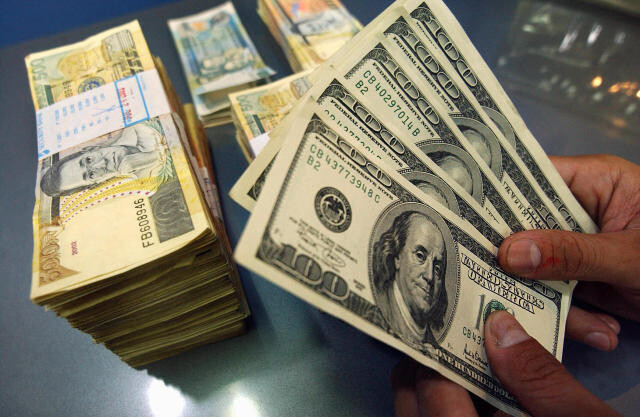
The Philippine government has set a target of reaching a $2 trillion economic scale by 2050, building on its strong economic growth momentum. To achieve this, it plans to actively promote new growth engines, strengthen existing industries, and attract private sector investment. In particular, the government is expected to emphasize the crucial role of the private sector in investments for infrastructure development, sustainable growth, and shared prosperity.
Philippine Socioeconomic Planning Secretary Arsenio Balisacan recently attended the Philippine Economic Dialogue in Milan, Italy, where he presented the Philippines' solid economic performance, investment-friendly policies, and long-term vision to European business leaders and financial stakeholders.
According to local media reports, Secretary Balisacan highlighted that the current $392 billion Philippine economy is steadily progressing towards middle-income country status and possesses attractive market characteristics such as a population of 114 million and a young median age of 27. He projected that the economy could reach $2 trillion by 2050 if the current growth trajectory is maintained and there are no significant external shocks.
Secretary Balisacan explained that the Philippines' economic transformation will be driven by initiatives that promote new growth engines while strengthening existing industries. He emphasized that the participation of the private sector will play a vital role, especially in infrastructure and investments that bring about lasting impact and shared prosperity. To this end, he added that the government is actively pursuing key policies to accelerate infrastructure development and reduce business costs.
Furthermore, Secretary Balisacan encouraged investors to explore opportunities in the Luzon Economic Corridor, a key initiative designed by the Philippine government to boost trade and investment across the region. The Luzon Economic Corridor connects Subic, Clark, Manila, and Batangas through coordinated investments in logistics, energy, and infrastructure. This corridor is expected to support key industries such as agriculture, semiconductors, manufacturing, and finance, serving as a gateway to Asian and global markets.
Secretary Balisacan underscored that the Philippines, with its solid macroeconomic fundamentals, reform momentum, young and skilled workforce, and strategic geographical advantages, is an "ideal partner in the Asian and global markets." He asserted that "now is the opportune time to invest in the Philippines."
The Philippine government's ambitious economic growth target and efforts to attract private investment reflect the potential of the Philippine economy, which has shown steady growth in recent years. According to World Bank data, the Philippines has recorded relatively high economic growth rates in the East Asia and Pacific region, and its young demographic structure and the government's proactive investment promotion policies are expected to serve as drivers for sustaining this growth.
In particular, the development plan for the Luzon Economic Corridor, emphasized by Secretary Balisacan, is a key example of the Philippine government's commitment to driving economic growth through infrastructure development. The major economic hubs connected by this corridor are expected to significantly contribute to activating domestic and foreign investment by enhancing logistics efficiency, stabilizing energy supply, and expanding essential infrastructure. Furthermore, it is anticipated to promote the development of various sectors, including agriculture, manufacturing, and high-tech industries, thereby strengthening the overall competitiveness of the economy.
It is noteworthy that the Philippine government's investment promotion efforts focus not only on expanding the economic scale but also on sustainable growth and improving the quality of life for its citizens. Infrastructure investment through private sector participation can lay the foundation for long-term economic development, create new jobs, and contribute to improving overall social productivity. Moreover, emphasizing shared prosperity indicates the government's commitment to ensuring that the fruits of economic growth are distributed equitably across society and not concentrated in specific groups.
Of course, the Philippines still faces challenges in achieving its goal of a $2 trillion economy by 2050. Persistent high poverty rates, fragile infrastructure, and issues with bureaucracy and corruption can act as obstacles to sustained economic growth. Therefore, it is crucial for the Philippine government to make continuous efforts to address these issues, along with creating a predictable investment environment, establishing the rule of law, and securing the trust of domestic and foreign investors through transparent and efficient governance.
Nevertheless, the Philippine government's ambitious goal-setting and concrete implementation plans offer a glimpse into the bright future of the Philippine economy. The young and dynamic population, abundant natural resources, and the government's strong commitment to growth suggest that the Philippines has the potential to emerge as a new economic powerhouse in Southeast Asia. The international community will likely pay close attention to the policies the Philippine government will pursue and the results it will achieve in realizing its vision. In particular, the successful implementation of the Luzon Economic Corridor development and the active participation of the private sector are expected to be crucial variables determining the long-term growth trajectory of the Philippine economy.
[Copyright (c) Global Economic Times. All Rights Reserved.]






























